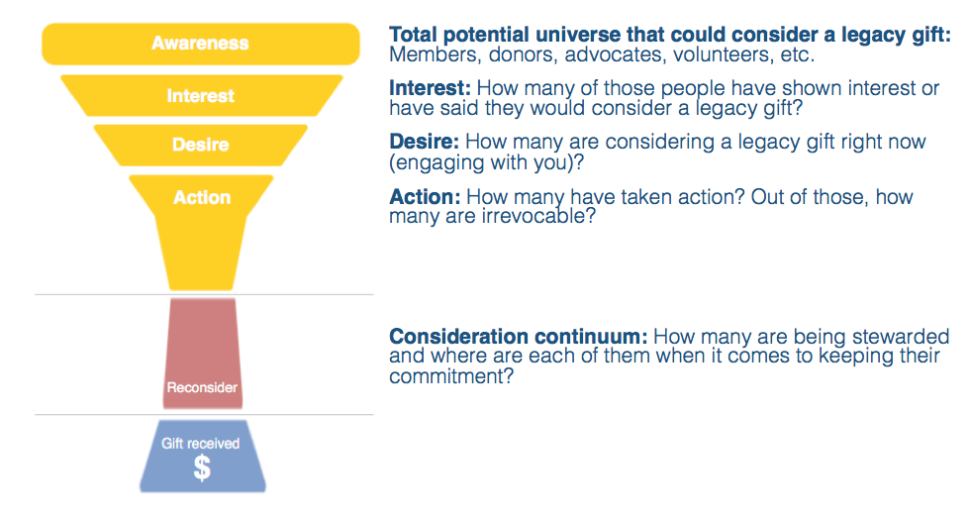We use cookies to ensure that we give you the best experience on our website. By continuing to use this site, you agree to our use of cookies in accordance with our Privacy Policy.
 Login
Login
Your Role
Challenges You Face
results
Learn
Resources
Company
Don’t count promises. Measure your pipeline and count legacy gift dollars instead.


The goal for legacy gift fundraising is to raise money right? In sports they say it doesn’t matter how many points you score, it’s whether you win the game. Counting Legacy Society members is counting points. It’s good, but it should not be your primary focus.
Yet, unfortunately, way too many nonprofits (leaders and staff) focus mostly on getting supporters to say that the organization is in their plan (thereby increasing the size of the Legacy Society).
I’m sure there are lots of reasons for this focus. For instance:
1. It’s a metric that is easy to count
2. It’s a metric that is easy to get supporters to commit to (it’s easier to get them to say the organization is in their plan than to ensure that the gift remains in their plan)
3. It’s a metric that is easy for a short-timer (someone who job-hops) to focus on
Etc.
The problem with this focus
It encourages getting people to say, “You’re in my plan” rather than “How can I give more?” “How can I get more involved?” “How can we build an even deeper, more meaningful and mutually beneficial relationship over time?”
Realized dollars
If in addition to counting commitments, we focus heavily on realized dollars, then the planned giving fundraising strategy will be aligned properly with the desired result.
But there’s one big problem with that too
You probably already thought to yourself, “But realized dollars require people to die… and that won’t happen for a long time.” So, how can we focus on realized dollars without sitting around waiting for people to die?
Focus instead on the funnel
Let’s face it. People can ultimately change their minds. And you can be sure they won’t tell you about their change of heart. So, ultimately, it does you and your organization no good to populate your Legacy Society with names if they don’t turn into realized dollars.
The private sector focuses on funnels to build pipelines of predictable revenue. I think the nonprofit sector should too. By doing so, the metrics will help you and your Board understand what’s really going on.
Here are some metrics I suggest you consider as you build out your funnel:

Of course, you can add more to this funnel
This is a rough outline. But the basic idea is that you need to focus on the entire funnel, not just on counting promises. Once you do, you’ll be able to assign dollar values to the numbers based on the realized dollars that actually come through over time.
Last thing… monitor migration!
If you only focus on the funnel, you’ll get enamored by vanity metrics. Yet, you really shouldn’t celebrate the size of each stage in your pipeline.
Rather, you should monitor how donors move themselves forward along the consideration continuum. If they are moving to the next stage and closer to making a decision in your organization’s favor, then that’s something to celebrate for sure!
We call this pipeline migration and that’s what our software helps you measure and monitor (along with a ton of other benefits).
In conclusion.
Look, I know this is a different way of thinking about your numbers. And, it will probably take some time, effort and refinement before you get the hang of this kind of measurement. But once the funnel is developed, you’ll have a much more reliable and honest way to measure what you are doing so you can see if it’s working. In the end, you, your leadership and your board will be much happier.
Related Posts:
>> Should legacy gift notification forms die?
>> One great legacy giving promotion
LIKE THIS BLOG POST? LEAVE YOUR COMMENTS BELOW AND/OR SHARE THIS WITH YOUR PEERS!
Get smarter with the SmartIdeas blog
Subscribe to our blog today and get actionable fundraising ideas delivered straight to your inbox!
